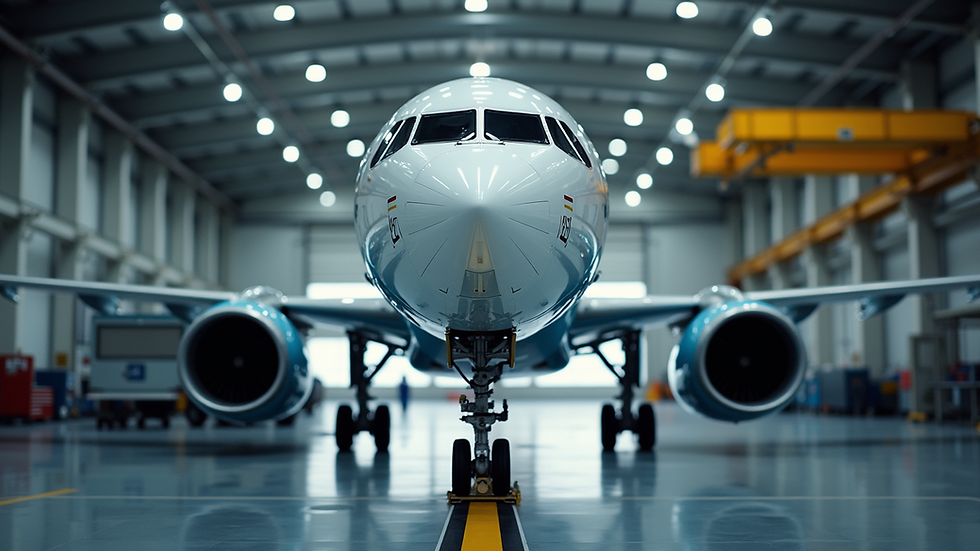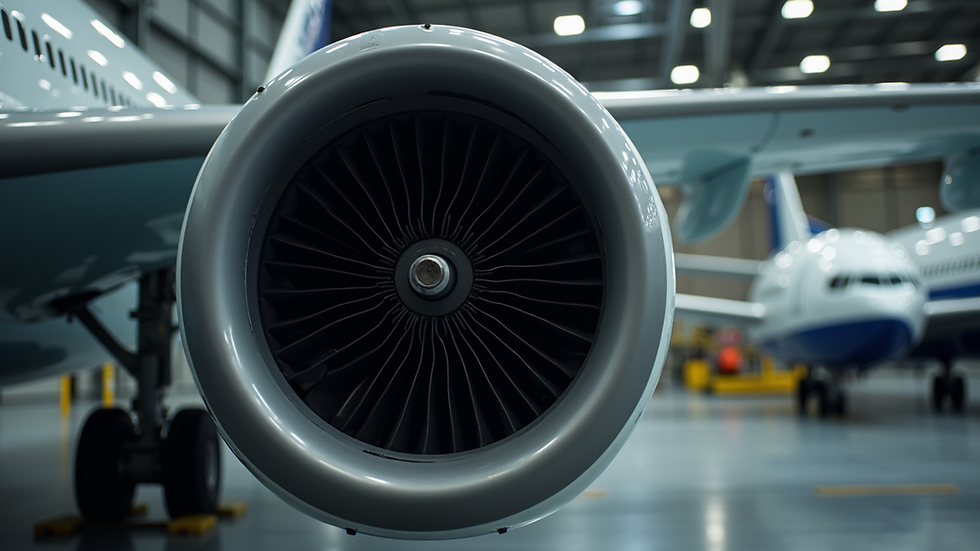The Core of Aviation Maintenance: Ensuring Safety and Efficiency
- Damon Whitlow

- Jul 14
- 4 min read
Aviation maintenance is crucial for the safety and efficiency of air travel. It encompasses various activities designed to ensure that aircraft operate at their best. With millions of passengers traveling globally every day, the attention to detail and quality assurance in this field cannot be overstated. This post dives deep into the core aspects of aviation maintenance, exploring its essentials, roles, and the value of acquiring a degree in this profession.
Aviation Maintenance Essentials
Aviation maintenance encompasses various tasks that include inspections, repairs, and the overall upkeep of aircraft. These are performed by trained professionals who ensure that every component of an aircraft meets safety regulations and operational efficiency standards.
Key components of aviation maintenance include:
Regular Inspections: Aircraft undergo routine checks, from pre-flight inspections to scheduled maintenance every few months. This ensures that all parts are functioning properly.
Repairs: When parts malfunction, immediate and effective repair is essential to maintain safety.
Overhauls: Major overhauls are periodically required to replace worn-out components, ensuring the aircraft's longevity.

Notably, the aviation maintenance industry places significant emphasis on compliance with various regulations set forth by organizations such as the Federal Aviation Administration (FAA) in the U.S. These regulatory bodies ensure that maintenance practices meet strict safety standards.
Roles in Aviation Maintenance
Several vital roles comprise the aviation maintenance field, each requiring specialized knowledge and skills. Here are a few key positions:
Aircraft Maintenance Technician (AMT):
AMTs are responsible for inspecting, repairing, and maintaining aircraft. They follow regulations and ensure each flight is safe.
Aviation Maintenance Engineer (AME):
AMEs focus on the technical side, often involved in designing maintenance schedules and overseeing repair processes.
Quality Assurance Inspectors:
These professionals ensure all maintenance tasks meet regulatory and safety standards, conducting thorough checks and audits.
Each role has its importance, and collaboration between them leads to successful maintenance operations. For instance, AMTs rely on guidance from AMEs for technically challenging repairs, while quality assurance inspectors validate these processes.

The aviation maintenance community also emphasizes ongoing training and certification. Continuous education keeps technicians updated with the latest technologies and regulations.
Is an Aviation Maintenance Degree Worth It?
Embarking on a career in aviation maintenance can often lead to lucrative and fulfilling job opportunities. However, many prospective technicians ponder whether pursuing a degree is worth the investment.
Benefits of an Aviation Maintenance Degree
Job Security: The aviation industry frequently faces a shortage of qualified technicians. Completing a degree program places graduates in a favorable position.
Higher Earnings: Technicians with formal education often secure higher starting salaries compared to those without degrees. According to the U.S. Bureau of Labor Statistics, the median salary for aircraft and avionics equipment mechanics was around $65,000 in 2020, with higher earnings for those with degrees.
Diverse Career Opportunities: Graduates can choose from various paths within the aviation industry, including roles in airlines, government agencies, and private firms.
Challenges to Consider
However, there are challenges related to pursuing a degree in aviation maintenance:
Cost: Depending on the institution, tuition fees can be significant. Prospective students should assess their financial readiness.
Time Commitment: Degree programs often require 1-2 years of study, which could delay entry into the profession for some.
Ultimately, weighing these factors will help individuals decide if an aviation maintenance degree aligns with their career goals.
The Importance of Safety Protocols in Aviation Maintenance
Safety protocols are the bedrock of aviation maintenance. Implementing rigorous safety measures helps prevent accidents and ensures the integrity of maintenance operations.
Key Safety Protocols Include
Safety Management Systems (SMS): SMS frameworks help organizations analyze potential safety risks and implement corrective actions.
Proper Training Procedures: Regular training sessions ensure that technicians are familiar with the latest maintenance protocols.
Incident Reporting: Establishing clear channels for reporting safety concerns allows for rapid response and continuous improvement.

According to aviation safety reports, proper maintenance significantly reduces the risk of mechanical failure, contributing to overall flight safety. For instance, a report from the FAA indicated that unsafe maintenance practices were among the leading causes of aircraft accidents.
The Future of Aviation Maintenance
As technology continues to evolve, so does the field of aviation maintenance. Emerging trends indicate significant shifts in how maintenance is conducted.
Technological Innovations
Predictive Maintenance: Utilizing advanced data analytics, predictive maintenance allows technicians to forecast when a component might fail and address it proactively.
Drones in Inspections: Drones are increasingly used for aircraft inspections, allowing for faster and safer assessments of hard-to-reach areas.
Additionally, the industry's response to sustainability challenges, such as reducing carbon emissions, promises exciting developments in maintenance procedures.
A Growing Demand
The global aviation sector is expected to see continuous growth over the next few decades, creating an increased demand for qualified aviation maintenance professionals. According to the International Air Transport Association (IATA), air passenger traffic is projected to double by 2037.
As travel demand rises, so will the necessity for maintenance professionals who can ensure safety and efficiency in aircraft operations.

Ultimately, investing in a career in aviation maintenance can lead to opportunities in a steadily growing field while contributing significantly to air travel safety.
Key Takeaways
In summary, aviation maintenance is an essential component of the aviation industry, ensuring the safety and efficiency of air travel. Emphasizing the importance of regular inspections, skilled professionals, and rigorous safety protocols, this field plays a pivotal role in maintaining operational standards.
The integration of technology will continue to innovate the industry, and as demand for air travel rises, the need for qualified technicians will become increasingly important. A degree in aviation maintenance can serve as a valuable asset for aspiring professionals, positioning them for a rewarding and secure career in aviation.
By focusing on these aviation maintenance essentials, individuals can make informed decisions about their future, prepared to contribute to the high standards of safety and efficiency that define the aviation industry.





Commentaires